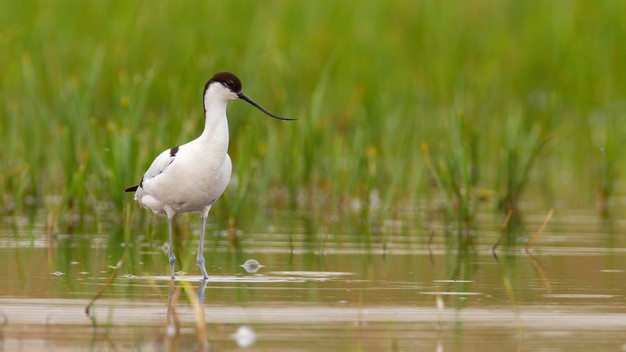Avocet is a species of wading bird. There are four categories of avocet that can be found in Europe, Asia, Australia, and on the Pacific coast of North America. Avocet lives in shallow lakes, saltwater wetlands, marshes, coastal bays, and swamps. The number of avocets has decreased in the final pair of decades due to habitat loss and improved chemical pollution of water ecosystems.
Besides these dangers, avocets are inclined to avian botulism (a bacterial disease) and influenza (a viral disease). Luckily, the number of avocets in the wild is still predictable and they are not on the record of endangered species.
10 Interesting Avocet Facts:
Avocet is a medium-sized bird. Its weight is 11 to 15 ounces and reaches between 16 to 18 inches in length.
The wingspan of the avocet varies between 30 and 32 inches.

The body of the avocet is covered with black and white feathers. Young animals stare like adults with one exception: they have brown feathers rather than black.
The most extraordinary feature on the body of the avocet is its long, upward curved beak.
Males rarely have longer beaks than females.
A unique beak is a specific change to life in swampy areas. When looking for food, avocets rely on eyesight.
They are carnivorous animals (meat-eaters). They eat mostly insects, worms, crustaceans, mollusks, fish, and amphibians.
Avocets are social animals that reside in large flocks.
Avocets are territorial animals.
On average, avocets can prevail up to 5 years in the wild.
Avocets Identifying features:
- Avocets have black and white feather.
- They have blue color leg.
- Their beak is long thin and curved. It is black in color.
- Avocets live in grasslands, wetland,Marine and intertidal.
They pick their pray through their beak. They usually live in flock of 6-30 individuals.





